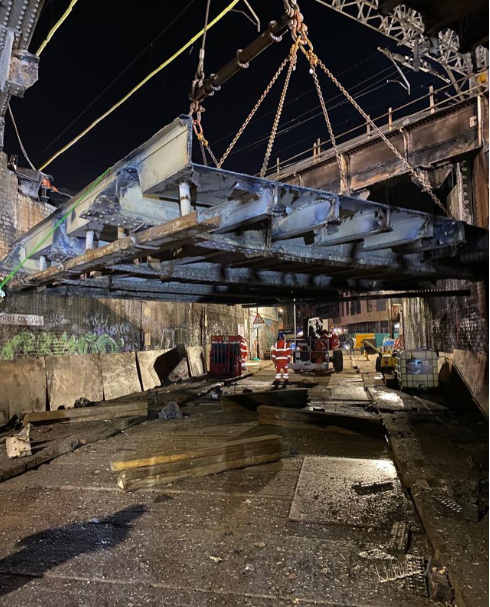Bridge replacement project involving the deconstruction and removal of a deteriorated structure, navigating numerous site constraints and requiring an innovative engineering approach.
Client: Network Rail
Principal Contractor: Murphy’s
Demolition Contractor: Clark Demolition
